
How to Use Mosfet: Examples, Pinouts, and Specs
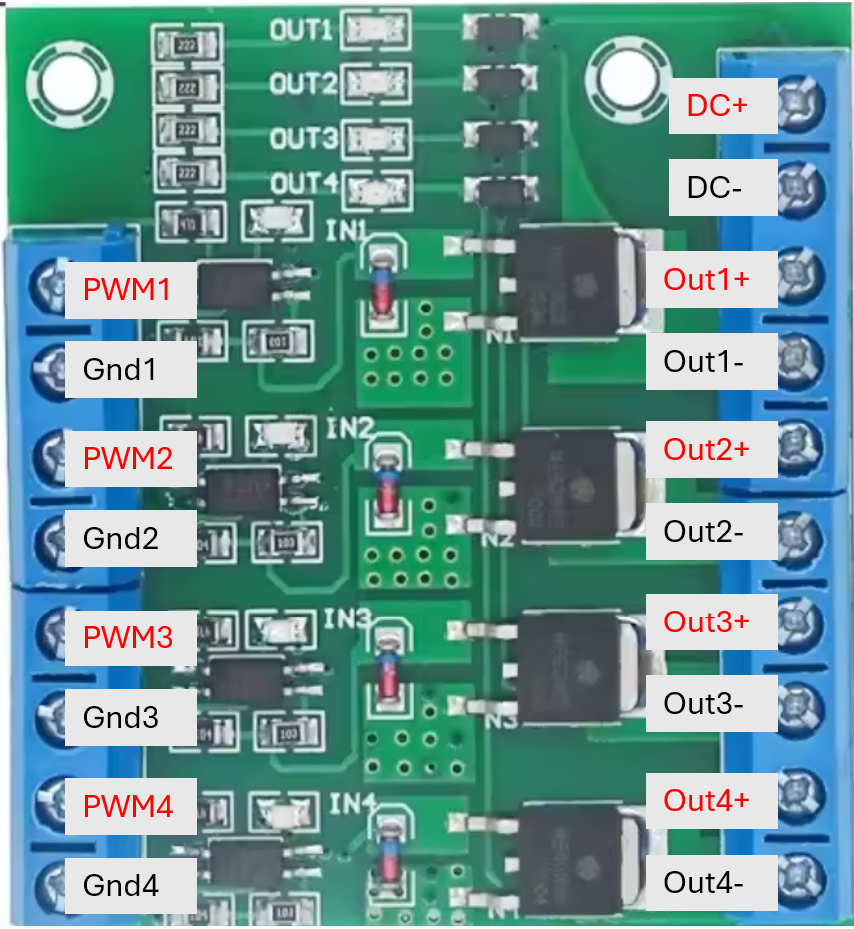
 Design with Mosfet in Cirkit Designer
Design with Mosfet in Cirkit DesignerIntroduction
A Metal-Oxide-Semiconductor Field-Effect Transistor (MOSFET) is a type of transistor used for switching and amplifying electronic signals. It is controlled by voltage and is widely used in power electronics and digital circuits due to its high efficiency and fast switching capabilities. MOSFETs are essential components in modern electronics, enabling applications such as motor control, power supplies, audio amplifiers, and digital logic circuits.
Explore Projects Built with Mosfet
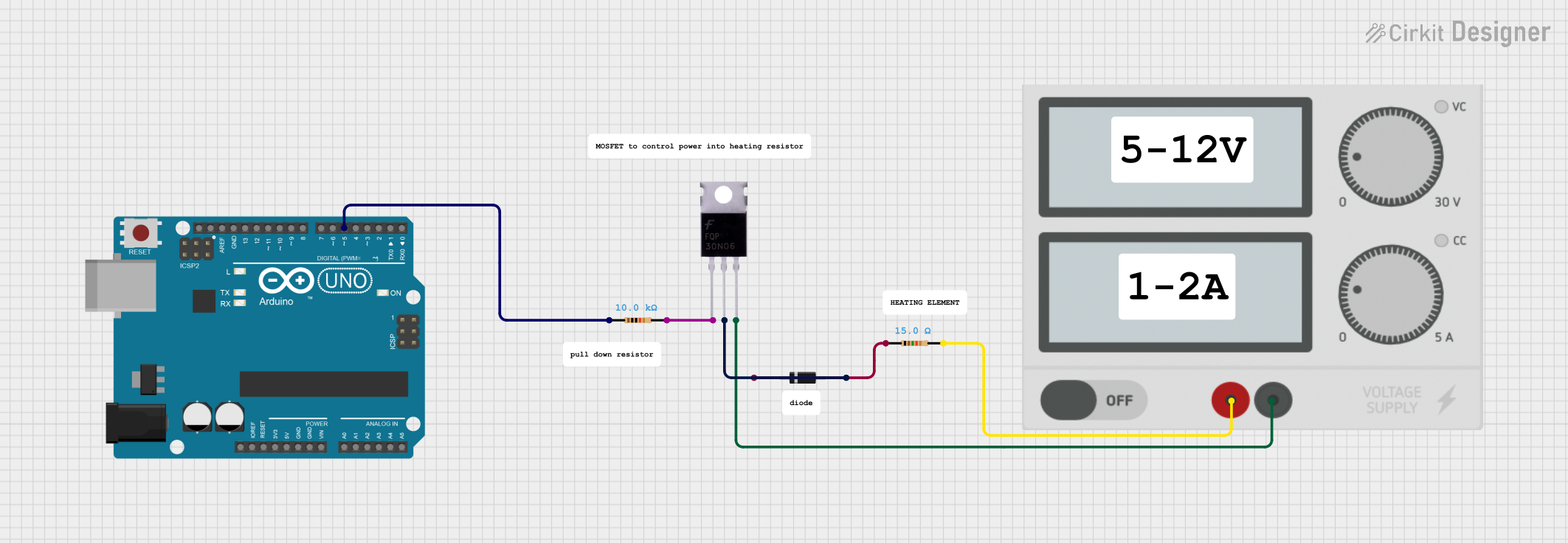
 Open Project in Cirkit Designer
Open Project in Cirkit Designer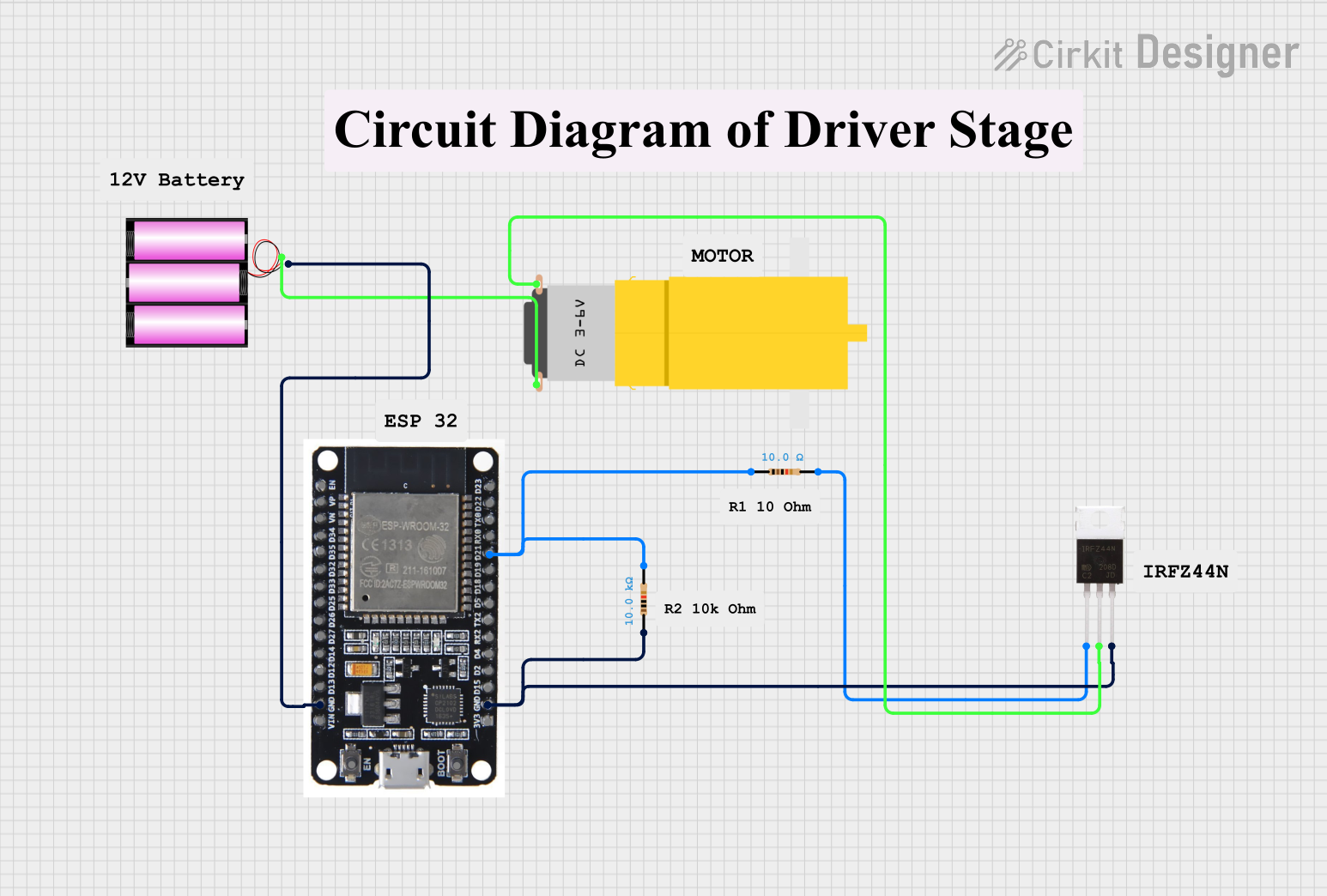
 Open Project in Cirkit Designer
Open Project in Cirkit Designer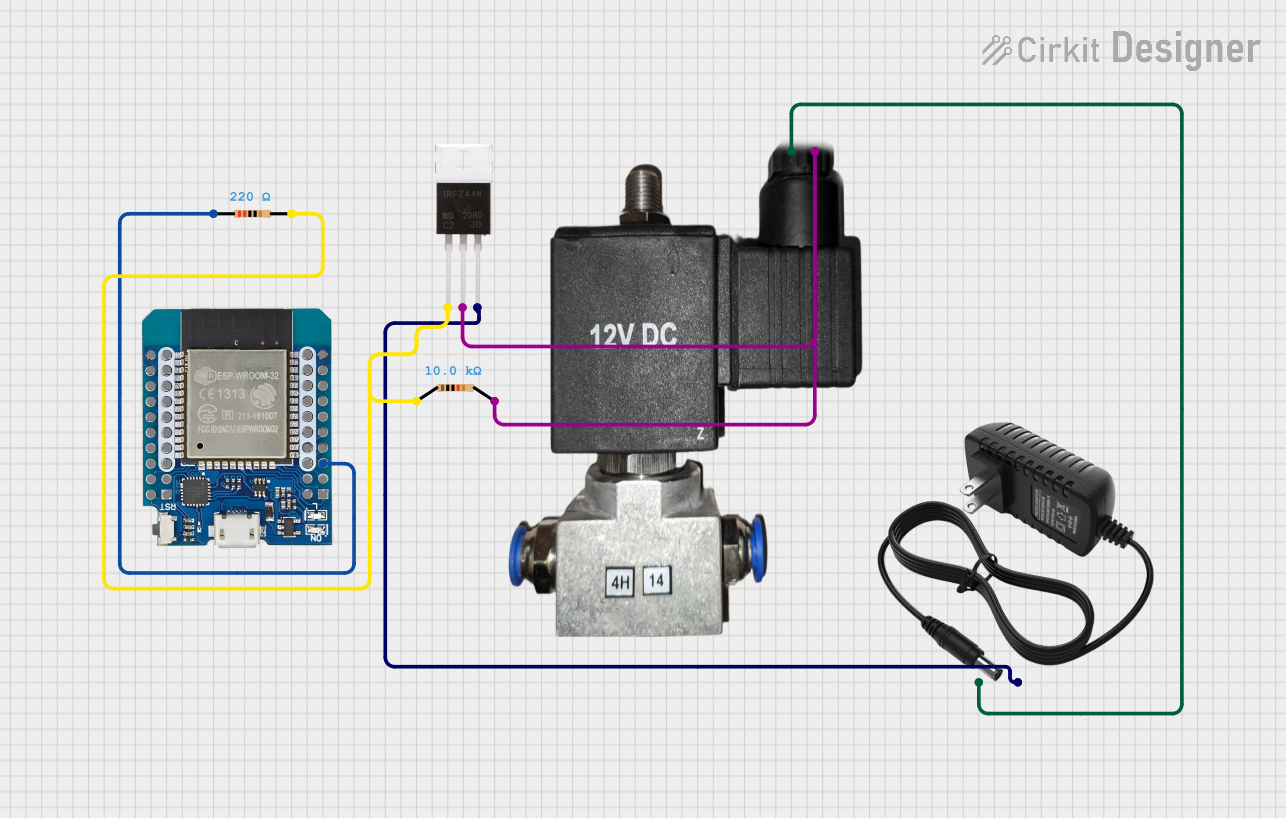
 Open Project in Cirkit Designer
Open Project in Cirkit Designer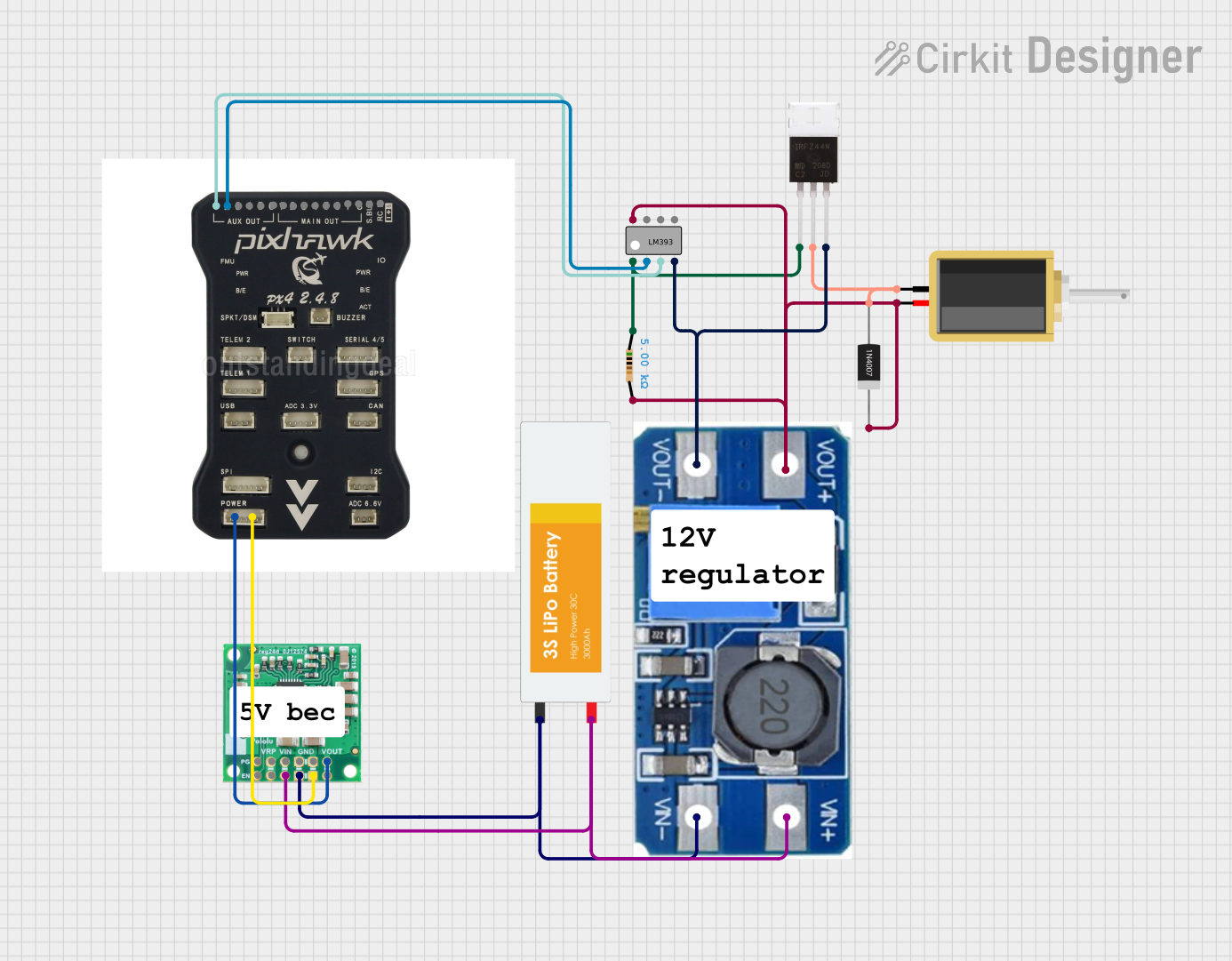
 Open Project in Cirkit Designer
Open Project in Cirkit DesignerExplore Projects Built with Mosfet

 Open Project in Cirkit Designer
Open Project in Cirkit Designer
 Open Project in Cirkit Designer
Open Project in Cirkit Designer
 Open Project in Cirkit Designer
Open Project in Cirkit Designer
 Open Project in Cirkit Designer
Open Project in Cirkit DesignerCommon Applications and Use Cases
- Power management in DC-DC converters and inverters
- Motor speed control in robotics and industrial systems
- Signal amplification in audio and RF circuits
- Switching in digital logic circuits and microcontroller-based systems
- LED dimming and control circuits
Technical Specifications
Below are the general technical specifications for a typical N-channel MOSFET (e.g., IRF540N). Specifications may vary depending on the specific MOSFET model.
Key Technical Details
- Type: N-channel or P-channel
- Maximum Drain-Source Voltage (VDS): 100V (varies by model)
- Maximum Gate-Source Voltage (VGS): ±20V
- Continuous Drain Current (ID): 33A (at 25°C for IRF540N)
- Power Dissipation (PD): 150W
- RDS(on) (On-State Resistance): 0.044Ω (typical for IRF540N)
- Threshold Voltage (VGS(th)): 2-4V
- Switching Speed: Fast (nanoseconds range)
Pin Configuration and Descriptions
MOSFETs typically have three pins: Gate (G), Drain (D), and Source (S). Below is the pin configuration for a standard TO-220 package.
| Pin Number | Pin Name | Description |
|---|---|---|
| 1 | Gate (G) | Controls the MOSFET's switching state. A voltage applied here determines whether the MOSFET is on or off. |
| 2 | Drain (D) | The main current-carrying terminal. Connects to the load in most circuits. |
| 3 | Source (S) | The return path for current. Typically connected to ground or the negative terminal of the power supply. |
Usage Instructions
How to Use the MOSFET in a Circuit
- Determine the Type: Identify whether the MOSFET is N-channel or P-channel. N-channel MOSFETs are more common and are used for low-side switching, while P-channel MOSFETs are used for high-side switching.
- Gate Drive Voltage: Ensure the gate voltage (VGS) is sufficient to fully turn on the MOSFET. For logic-level MOSFETs, a gate voltage of 5V is typically sufficient.
- Connect the Pins:
- Connect the Source to ground (N-channel) or the positive supply (P-channel).
- Connect the Drain to the load.
- Apply a control signal to the Gate to switch the MOSFET on or off.
- Use a Gate Resistor: Place a resistor (e.g., 10Ω) between the control signal and the Gate to limit inrush current and prevent damage to the MOSFET.
- Add a Flyback Diode: If the MOSFET is driving an inductive load (e.g., motor or relay), place a flyback diode across the load to protect the MOSFET from voltage spikes.
Example: Controlling a MOSFET with an Arduino UNO
Below is an example of using an N-channel MOSFET (e.g., IRF540N) to control an LED with an Arduino UNO.
Circuit Connections
- Gate: Connect to Arduino digital pin (e.g., pin 9) through a 220Ω resistor.
- Drain: Connect to the negative terminal of the LED.
- Source: Connect to ground.
- LED Positive Terminal: Connect to the positive supply (e.g., 12V) through a current-limiting resistor.
Arduino Code
// MOSFET Control Example with Arduino UNO
// This code turns an LED on and off using a MOSFET controlled by pin 9.
const int mosfetGatePin = 9; // Pin connected to the MOSFET Gate
void setup() {
pinMode(mosfetGatePin, OUTPUT); // Set pin 9 as an output
}
void loop() {
digitalWrite(mosfetGatePin, HIGH); // Turn the MOSFET on (LED ON)
delay(1000); // Wait for 1 second
digitalWrite(mosfetGatePin, LOW); // Turn the MOSFET off (LED OFF)
delay(1000); // Wait for 1 second
}
Important Considerations and Best Practices
- Heat Dissipation: Use a heatsink if the MOSFET is handling high currents to prevent overheating.
- Gate Voltage: Ensure the gate voltage is within the specified range to avoid damaging the MOSFET.
- Static Sensitivity: MOSFETs are sensitive to static electricity. Handle them with care and use anti-static precautions.
- Load Type: For inductive loads, always use a flyback diode to protect the MOSFET.
Troubleshooting and FAQs
Common Issues and Solutions
MOSFET Not Turning On:
- Ensure the gate voltage is high enough to exceed the threshold voltage (VGS(th)).
- Check for proper connections and ensure the Gate is not floating.
Excessive Heat:
- Verify that the MOSFET is operating within its current and power dissipation limits.
- Use a heatsink or active cooling if necessary.
MOSFET Fails to Switch Off:
- Check for a pull-down resistor (e.g., 10kΩ) on the Gate to ensure it discharges when the control signal is off.
- Ensure there is no leakage current from the control circuit.
Voltage Spikes Damaging the MOSFET:
- Add a flyback diode across inductive loads to suppress voltage spikes.
- Use a snubber circuit if necessary.
FAQs
Q: Can I use a MOSFET with a 3.3V control signal?
A: Yes, but only if the MOSFET is a logic-level type with a low threshold voltage (e.g., <2V). Check the datasheet for compatibility.
Q: How do I know if my MOSFET is damaged?
A: A damaged MOSFET may show a short circuit between the Drain and Source or fail to switch properly. Use a multimeter to test for shorts.
Q: Can I use a MOSFET without a heatsink?
A: It depends on the current and power dissipation. For low-power applications, a heatsink may not be necessary, but for high-power applications, it is essential.
Q: What is the difference between N-channel and P-channel MOSFETs?
A: N-channel MOSFETs are more efficient and used for low-side switching, while P-channel MOSFETs are used for high-side switching but have higher on-resistance.
By following this documentation, you can effectively use MOSFETs in your electronic projects and troubleshoot common issues.